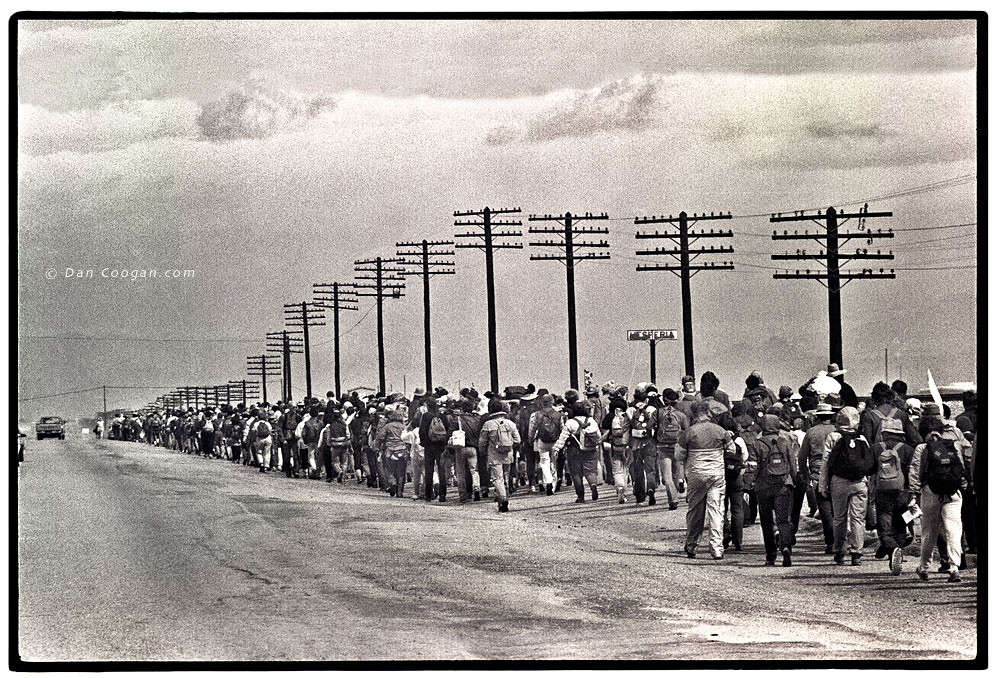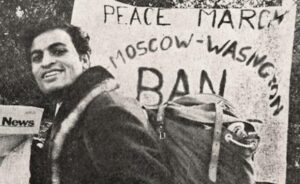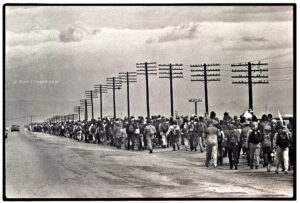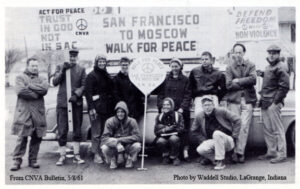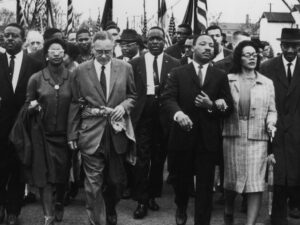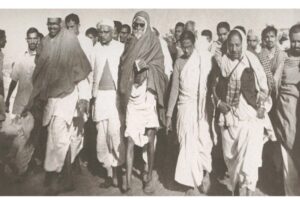The Great Peace March for Global Nuclear Disarmament was a cross-country mass walk in 1986 with a goal of raising awareness to the growing danger of nuclear proliferation and to advocate for their complete and verifiable elimination. The group left Los Angeles on March 1, 1986, and arrived in Washington, D.C., on November 15, 1986, a journey of about 3,700 miles, nine months, many campsites and great experiences of community.
Some six hundred people marched to demonstrate their opposition to the world-wide nuclear arms race. “We will create a non-violent focus for positive change; the imperative being that nuclear weapons are politically, socially, economically and morally unjustifiable, and that, in any number, they are unacceptable.”
Dain TePoel (PhD), University of Iowa, in a dissertation on endurance activism: transcontinental walking, and the politics of movement culture asked: “What is the relationship between long-distance walking and the politics of social movements? To what extent does “endurance” shape meanings of the March’s related but twin goals: the building of a collective, or “prefigurative” community, and a mass movement capable of attaining media coverage and achieving concrete, or “strategic” political outcomes?”
“The Great Peace March illustrates how social movement participants undertook endurance actions to communicate arduous and strenuous work for the cause. Endurance, physically, but also symbolically and metaphorically signifies particular meanings of movement for social movements such as persistence, focus, and determination to stretch limits and push boundaries. The marchers sought to accomplish a difficult physical challenge and maintain the solidarity of their community.” And also to emphasize “their campaign’s equally extraordinary vision for denuclearization.”
“Their emphasis on endurance highlights the importance of the means of lasting work for social and political change that are valued in and of themselves. This study finds that collective effort and striving are crucial qualities that build solidarity in social movements, while also signaling the necessity of ongoing work for the cause and the forging of another way forward.”
